Save the system from unexpected incidents! Angle valve for a heating radiator and other types of locks
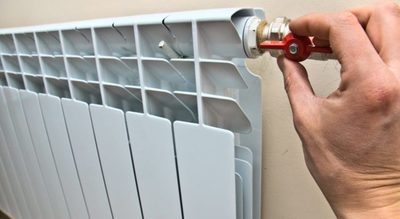
Radiator taps are elements of shut-off and control valves, which are included in the piping of the heating device to control the flow of the coolant.
They are being installed for ease of maintenance batteries and temperature regulation indoors.
Types of taps for heating radiators
Taps for heating radiators differ according to its purpose.
Shut-off ball valves
Shut-off devices are installed between the pipes and the radiator. for its maintenance without disconnecting the riser.
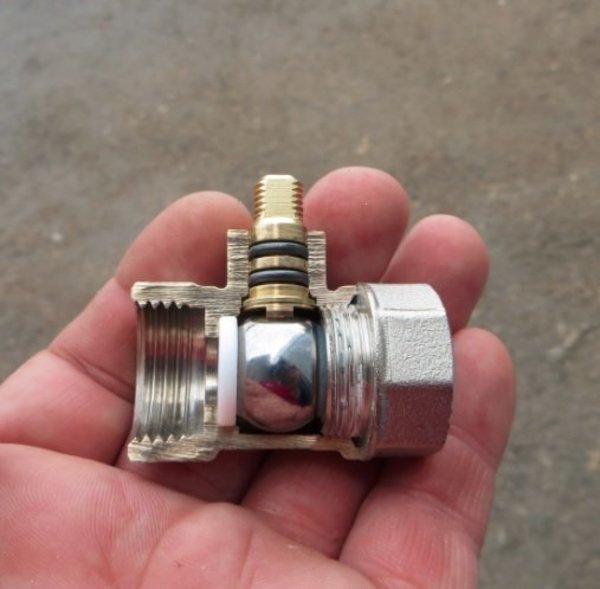
Photo 1. Ball shut-off valve for heating systems. There is a metal ball inside the device.
The shut-off valve consists of made of a metal body, a handle and two threaded pipes.
For ease of maintenance of the radiator, use tap with an American woman, the removable part of which is connected to a battery or a manual valve.
Inside the case there is metal ball with a through hole. The locking element is connected to the handle via a rod. Teflon seals ensure a rigid fit of the parts.
Operating principle
In the closed position, the passage of the coolant is closed by the solid surface of the ball. When the valve is opened, the ball rotates, as a result of which the coolant flows freely through the hole.
Peculiarities:
- The ball valve has only two operating positions of the handle - "Open" and "Closed". It is not designed to regulate battery temperature.
- The branch pipe is connected to the pipe only with flax and sealing paste. Using FUM tape can lead to depressurization of the connection when unscrewing the union nut.
Conical
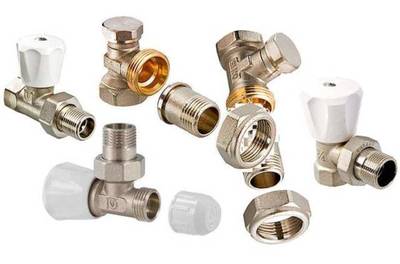
The cone device is designed for manual temperature control batteries by changing the flow rate of the coolant.
Device consists of a metal body with a handle. Inside the tap there is a stem with a conical valve for blocking the passage hole in the seat.
Operating principle
When the handle is turned, the force is transmitted to the mechanism of the device, which converts the rotational movement of the handle into the movement of the valve relative to the seat. Accordingly the dimensions of the opening for the coolant flow and its flow rate change.
When choosing cone regulators, you need to take into account their technical characteristics:
- Bandwidth (Kv). For single-pipe systems, devices with a value of Kv > 1.25 m³/h.
- Dependence of heat transfer batteries from the valve stroke. For high-quality valves, this characteristic is linear (for ease of regulation).
- Speed of coolant, when exceeded, the device starts to make noise. It is calculated at the design stage depending on the radiator power, supply and return temperatures.

Peculiarities:
- Manual cone valves reduce the heating of the heating device. At the coolant temperature less than 60 °C it is not practical to install them.
- In apartment buildings, manual regulators need periodic cleaning (the device's passage hole becomes clogged with deposits).
Attention! In a one-pipe system, a radiator with a manual valve must be equipped with a bypass.
Mayevsky crane
The device is intended to remove accumulated air and gases from the radiator.
Mayevsky crane is metal threaded plug with hole for air release, which is closed by a conical screw.
Operating principle
The screw head is slowly turned with a screwdriver before the airlock starts to come out (A hissing sound is heard). After a steady stream of coolant appears from the hole, the tap is returned to its original position.
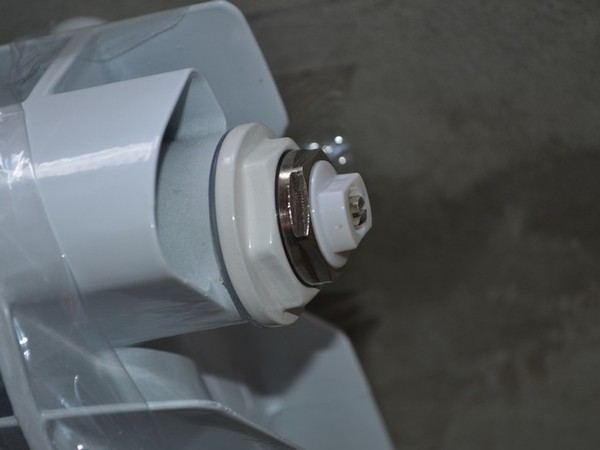
Photo 2. Mayevsky tap installed on the radiator. Allows you to release excess air from the system.
Peculiarities:
- On aluminum batteries it is necessary periodically (at least once a month) release the resulting gases.
- It is better to equip cast iron radiators not with an air vent, but manual valve with a spout.
Thermoregulatory devices
Valves with thermostats are used for automatic control of battery temperature depending on the surrounding air.
Instead of an adjustment handle, the device has a cylindrical thermoelement, filled with a heat-sensitive working material - liquid or gas. The body of the tap has a scale with temperature level marks for preliminary adjustment of the device.
Operating principle
Depending on the ambient temperature, the working material of the thermoelement changes its volumeAccordingly, the pressure on the valve stem changes, which moves relative to the valve seat, opening or closing the passage for the coolant.
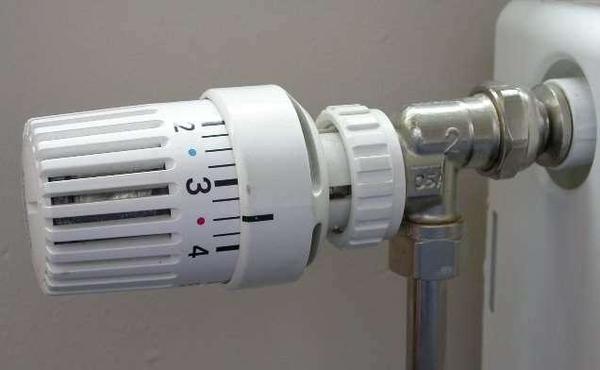
Photo 3. Thermoregulating device for heating radiators. The device has a scale with the temperature level.
Peculiarities:
- The thermal head must be directed horizontally from the radiator towards the roomWhen installed vertically, it is exposed to warm air flows from the radiator.
- Batteries with thermostat must be equipped with a bypass.
Types of taps by shape
Also, taps for heating radiators differ from each other. by form.
Straight
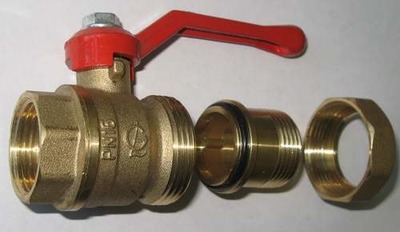
The direct valve inlet is located on the same axis as the output.
The valve's locking elements impede the flow of coolant and reduce the flow area.
Device throughput 2 times less, than a pipe of the same cross-section.
Corner
The entrance and exit are located at an angle of 90º. The fully raised valve does not block the flow section of the tap, therefore the capacity of the angle valve 2 times higher, than direct.
Purpose of the balancing valve for batteries
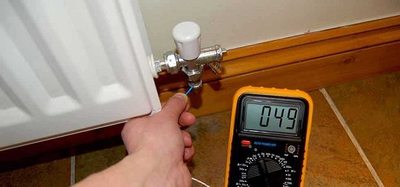
The valve is installed at the outlet of the heating device. to create the necessary hydraulic resistance to the flow of coolant.
By adjusting the device, uniform heat distribution is achieved across all radiators in an extended circuit. Without using a balancing valve, the temperature of the batteries decreases as they move away from the pump.
Useful video
Watch the video, which talks about the features of shut-off and control valves for heating systems, its types.
Conclusion
Selecting radiator control valves must be carried out taking into account their hydraulic characteristics. It is necessary to determine the optimal option that suits the operating conditions and parameters of the heating system.








Comments
There are also some disadvantages: water accumulates in the corner one, so it doesn’t drip, it’s a bit more expensive than the straight one, and it rusts faster if it’s made of low-quality material.